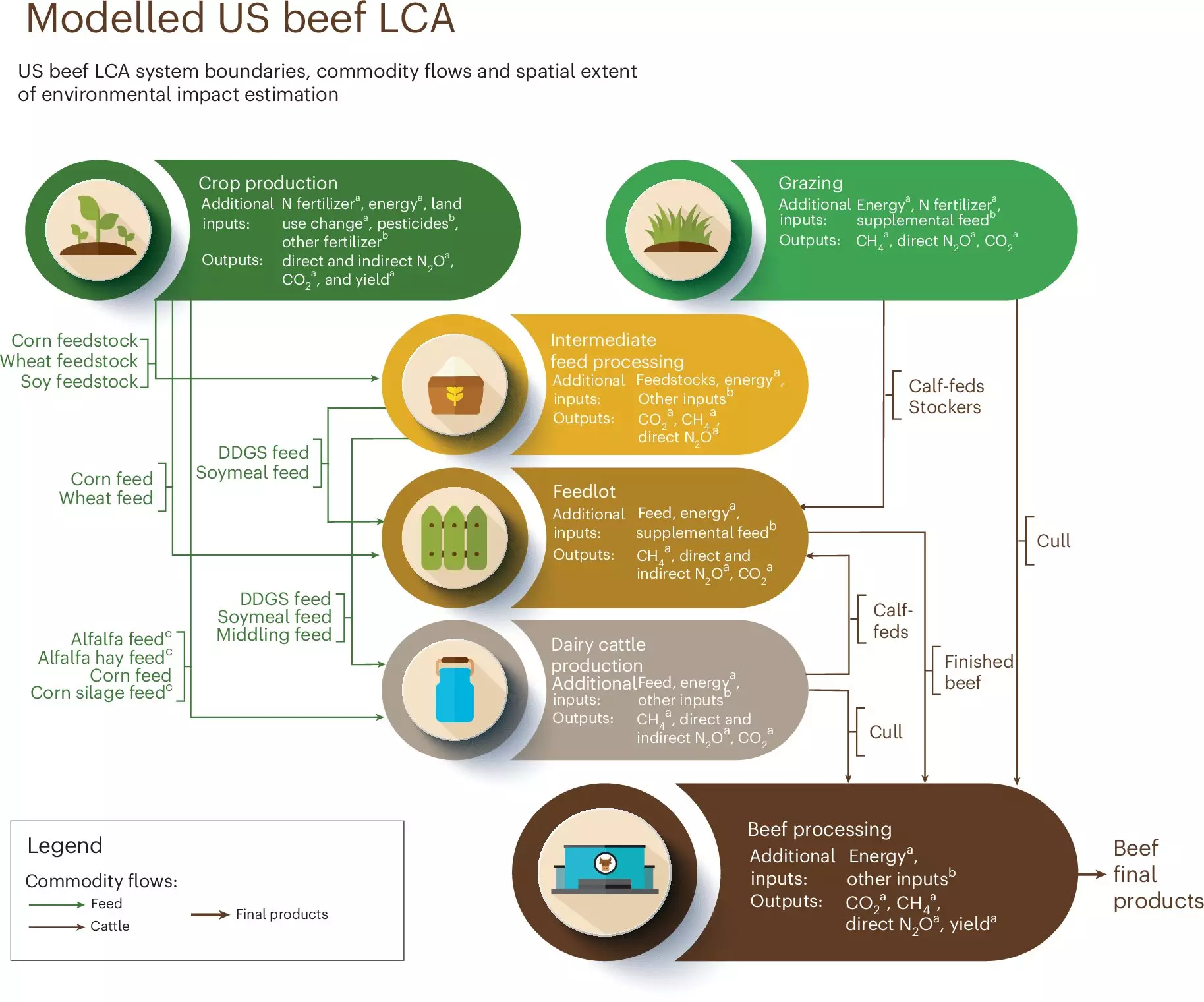In recent decades, the staggering rise in greenhouse gas emissions due to human activities has become a pressing concern for global climate change. Among various sectors, agriculture significantly contributes to these emissions, with the U.S. beef industry playing a notable role. Accounting for approximately 3.3% of the nation’s total greenhouse gas emissions, the beef industry’s environmental footprint poses a significant challenge to both climate and public policy efforts aimed at achieving sustainability. Despite various initiatives undertaken by industry players to lessen their carbon impact, a multifaceted supply chain continues to hinder comprehensive progress.
A pivotal study published in *Nature Food* by the University of Minnesota’s Institute on the Environment (IonE) and The Nature Conservancy sheds light on actionable strategies that the U.S. beef industry could employ to cut greenhouse gas emissions by as much as 30%. Lead author Rylie Pelton and her team undertook an innovative county-level analysis to assess the beef industry’s impact on emissions, marking the first location-specific investigation of its kind. Through their research, they uncovered geographical emission hot spots along the supply chain, highlighting the need for targeted interventions.
The findings revealed that the beef sector produces nearly 258 million metric tons of greenhouse gases annually. Emissions related to feed production and confinement, particularly in feedlots, are predominantly concentrated in the Great Plains and Midwest, while grazing emissions are distributed more evenly across the Western states. This geographical analysis is critical; it not only reveals emission patterns but also underscores that differing regions may require distinct mitigation strategies.
One of the most significant revelations from the study is that nearly one-third of current emissions could be effectively reduced through the adoption of alternative practices throughout the beef supply chain. Among the 42 alternative methods evaluated were practices such as cover cropping, the use of feed additives, and innovative energy management strategies. These practices present viable paths toward sustainability in the beef industry, yet their implementation has faced numerous challenges.
Due to the complexity of the beef supply chain, it is often difficult for stakeholders to pinpoint where improvements can be made. Pelton emphasizes that a tailored approach is essential for each region, providing specific recommendations based on local environmental conditions and existing practices. For instance, the team’s findings indicate a substantial opportunity for increasing carbon sequestration by introducing trees to pasturelands in the Southeast. Conversely, areas in the Northern Great Plains may benefit more from restoration efforts aimed at degraded wetlands.
The broader implications of this research suggest that sustainability must become integral to the U.S. beef industry’s operational framework. As Kris Johnson, a co-author of the study, points out, adopting sustainable practices not only serves the environment but is also in the economic interest of ranchers and rural communities. Long-term food security depends on an industry that effectively balances productivity with sustainable practices.
A noteworthy aspect of this research is its alignment with IonE’s FoodS3 model, designed to analyze and improve the sustainability of food supply chains. This model can provide much-needed transparency within the U.S. beef industry, facilitating informed decision-making among stakeholders.
The findings from this study represent a significant step toward understanding and mitigating the environmental impact of the U.S. beef industry. As the industry stands at a crossroads, there is a pressing need for rigorous implementation of the suggested practices. By prioritizing sustainability and honoring consumer expectations for environmentally responsible production, the beef sector can mitigate its contributions to climate change, ensuring a healthy planet for future generations. After all, a healthier beef industry is synonymous with a healthier environment, thereby bridging the gap between agricultural productivity and ecological responsibility.


Leave a Reply